Animation – You probably think of Saturday morning cartoons or maybe the latest Pixar tear-jerker. And yeah, that's part of it. But animation is way bigger and more varied than just that. It's everywhere – in movies, games, commercials, those slick videos explaining complex stuff on websites, even bouncing around on your phone screen.
At its heart, animation is pretty simple: it's the trick of making still images look like they're moving. You show a sequence of pictures, each one slightly different, fast enough, and boom – your brain sees movement.
But "animation" isn't just one thing. It's a huge playground of different styles and techniques, each with its own vibe and magic. I recently went down the rabbit hole exploring all these styles, and wow, it's diverse! So, grab a coffee, get comfy, and let's check out some of the cool ways artists bring things to life, starting with the ones you probably see most often.
Before diving into the styles, here’s one quick tip to fix low resolution anime. Whether they are old anime only exist in degraded quality, 720p footage created by AI anime generators, or those suffering from compression artifacts when shared online, here’s a life-saver.
Old animation or downloads are usually in 480p/720p compressed quality, which looks blurry and pixelated on modern screens. With AI diffusion+GAN tech, now you can restore animations to 1080p/4k high resolutions.
![]() Upscale, Sharpen, and Generate Details with Aiarty Video Enhancer
Upscale, Sharpen, and Generate Details with Aiarty Video Enhancer
Aiarty Video Enhancer is a must-have if you're working with traditional animation or AI-generated footage that are in low resolution or highly compressed. Upscale to 4K realistic details, and preserve the original style—whether it's watercolor, pixel art, or rotoscope.
1. 2D Animation (Vector-Based)
This is probably the workhorse of modern animation you see online and on TV, created with modern digital art software. Think clean lines, smooth movements, and often bright colors. It's made using computer software (like Adobe Animate or Toon Boom Harmony) where characters and objects are created with vectors – basically math equations defining lines and shapes.
This makes it super flexible; you can scale things up or down without losing quality, and animators can create "rigs" (digital skeletons) to move characters without redrawing every single frame. It's efficient and great for everything from shows like Rick and Morty, which often uses digital 2D, to countless web series and explainer videos.
2. 3D Animation (CGI)
Step into the third dimension! This is the stuff of Pixar movies and big-budget video games. Instead of flat drawings, artists create digital models of characters, objects, and entire worlds in 3D space (think X, Y, and Z axes). They can then move these models, light them, add textures, and film them with virtual cameras.
The result? Animations with depth, realism (or stylized realism), and often breathtaking detail. Think Toy Story, Frozen, or the amazing visuals in modern games. It's complex, often needs teams of specialists, but the results can be truly immersive.
3. Traditional Animation (Cel/Hand-Drawn)
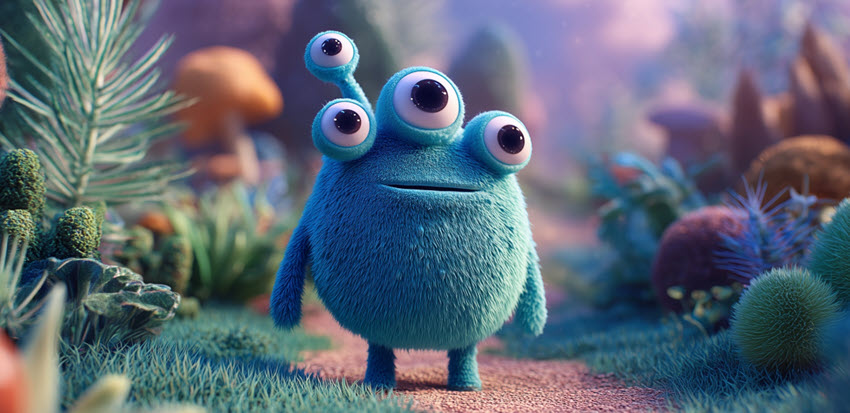
This is the OG, where animation really got its start, and one of the popular art styles for content creators to use it as a reference or get inspired. We're talking about those golden age Disney flicks, like Pinocchio or Fantasia, or Studio Ghibli's Princess Mononoke. Frames are painstakingly drawn and painted by hand. Artists usually worked on clear sheets – "cels" – layered them over painted backgrounds, one frame at a time.
It's incredibly labor-intensive, requiring immense skill and patience, but the result has a unique warmth, fluidity, and artistic charm that digital methods often try to emulate. While not common for features anymore due to cost and time, the principles learned here are foundational for all animation.
4. Stop Motion Animation
Stop motion involves taking a physical object (a puppet, clay figure, Lego brick, and anything), moving it just a tiny bit, taking a photo, moving it again, taking another photo, and so on.
If you play those photos back quickly, the object seems to move all by itself. It's got this real, often wonderfully quirky, handmade quality. Some of the iconic scenes are from Aardman's Shaun the Sheep, the detailed worlds in Laika's Coraline, or even those charming old Rankin Bass holiday specials.
5. Motion Graphics
Ever watched a cool video intro with flying logos, animated text, and slick transitions? That's motion graphics. It's less about characters telling stories and more about bringing graphic design elements to life with movement, such as shapes, text, icons, charts.
It's huge in advertising, explainer videos, title sequences, and data visualization. It uses software like Adobe After Effects to make information engaging and visually dynamic. It’s clean, informative, and often very stylish.
6. Anime
Instantly recognizable, right? Originating from Japan, Anime isn't just a style, but a whole industry with diverse genres. However, it often shares common visual traits: expressive (often large) eyes, dynamic action sequences, distinct character designs, and sometimes stylized use of limited animation for efficiency.
Whether it's the enchanting magic of Kiki's Delivery Service, the high-octane fights in Jujutsu Kaisen, or the cyberpunk cool of Cowboy Bebop, Anime pulls in huge crowds worldwide. It just has this unmistakable look and energy.
7. Whiteboard Animation
You've definitely seen these. It looks like a hand is drawing illustrations and text onto a whiteboard (or blackboard, or glass) to explain a concept. It became super popular for explainer videos because it's simple, clear, and keeps the focus squarely on the message being delivered.
While some early ones were literally filmed drawings, most are now digitally created to mimic the effect. It’s straightforward and effective for teaching or explaining complex ideas.
8. Kinetic Typography
This style focuses entirely on animating text. Letters might fly in, morph, change color, or pulse to the beat of music or a voiceover. Think lyric videos, expressive quotes brought to life, or ads where the message is the visual.
It's all about using font, size, color, and movement to add emotion and emphasis to the words themselves.
9. Rotoscoping
Rotoscoping is where drawing meets real life. Animators actually trace over live-action film, one frame at a time, to get that super realistic movement and form down. The end result can look amazingly smooth and true-to-life, but still has that distinct animated, sometimes even painterly or graphic, vibe.
Think parts of Fleischer Studio's early Superman cartoons or Richard Linklater's movie A Scanner Darkly.
10. Cut-Out Animation
Imagine making characters and scenes out of paper or cardboard shapes and moving them around frame by frame, like stop motion, but flat. That's traditional cut-out animation. It has a charming, storybook quality.
The most famous modern example is South Park – its early episodes were literally made with construction paper cut-outs! Now, they use digital tools to recreate that same flat, jointed-character look much more efficiently.
11. Claymation (Clay Animation)
A specific, much-loved type of stop motion. Here, the characters and sometimes even the sets are made out of malleable clay or plasticine. This allows for wonderfully expressive, squishy, and tactile animations.
Aardman Animations are the masters of this with Wallace & Gromit, Chicken Run, and Shaun the Sheep. You can almost feel the thumbprints in the clay, giving it a unique, handmade charm.
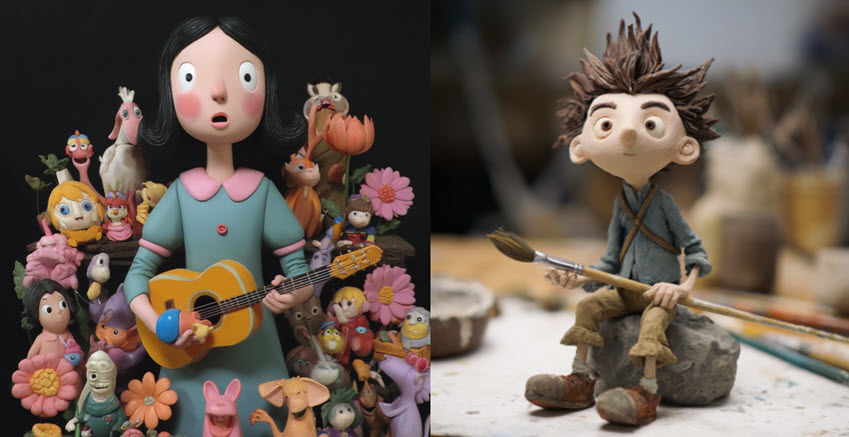
12. Pixel Art Animation
Hello, retro vibes! Pixel art animation uses tiny squares pixels as the building blocks, often with limited color palettes, mimicking the look of classic video games from the 8-bit and 16-bit eras.
Picture old-school arcade games like Pac-Man or newer indie hits like Celeste. For me, pixel art animation got that warm, fuzzy nostalgic feel, and it definitely takes a special kind of talent.
13. Live-Action/Animation Mix
This style basically plops animated bits or characters right into real, filmed footage. Who Framed Roger Rabbit is the big one everyone knows, but you also see it in movies like Mary Poppins or even when they just add cool animated graphics to a regular video.
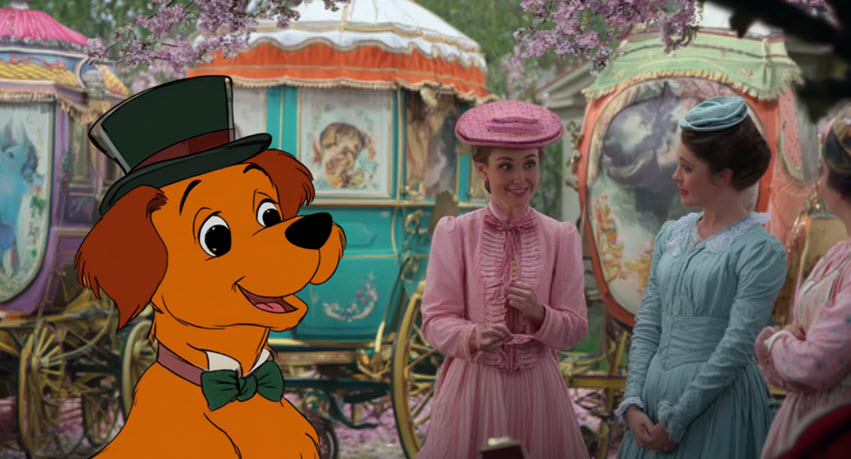
14. Motion Capture (Mocap)
Want super realistic movement for your 3D characters? Mocap is the way. Actors wear special suits covered in sensors or markers, and cameras track their movements. This data is then applied to a 3D character rig, allowing the digital character to move exactly like the human actor.
It's used heavily in big-budget films —such as Gollum in Lord of the Rings or the Na'vi in Avatar— and video games to achieve nuanced, lifelike performances.
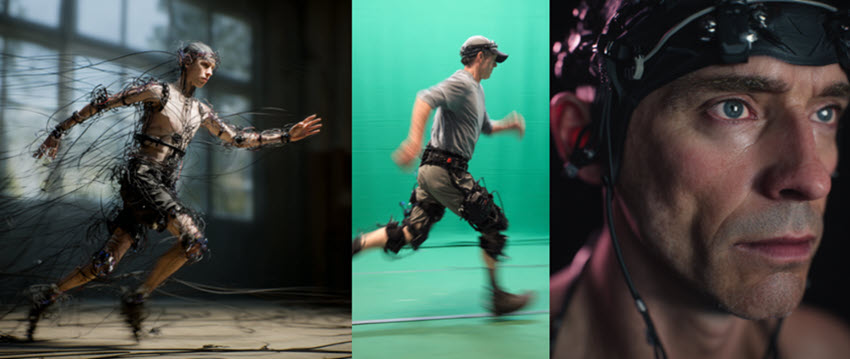
15. Minimalist Animation
Minimalist animation boils things down to the bare essentials: straightforward shapes, not a ton of colors, crisp lines, and smooth action. It's all about being clear, getting the idea across, and looking sharp.
You see it a lot in modern explainer videos, app demos, and design-focused shorts where the goal is to communicate an idea cleanly and effectively without visual clutter.
16. Isometric Animation
This style gives you a sort of bird's-eye, pseudo-3D view, even though it's often made with 2D techniques. Imagine looking down at an angle onto a scene where parallel lines stay parallel, unlike in true perspective.
It creates a clean, organized, almost diagram-like look, often used in explainer videos to show processes, cityscapes, or technical illustrations, and famously in games like Monument Valley.
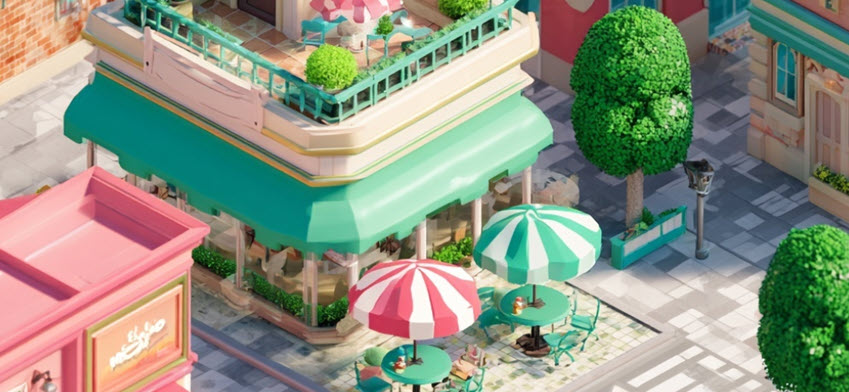
17. Sand Animation
Yes, animation with sand! Typically, an artist manipulates sand on a lightbox, creating images and scenes that flow and transform. This can be filmed frame-by-frame or performed live and projected.
The result is ephemeral, textured, and often mesmerizingly beautiful. Ukrainian artist Kseniya Simonova gained fame for her stunning live sand-storytelling.
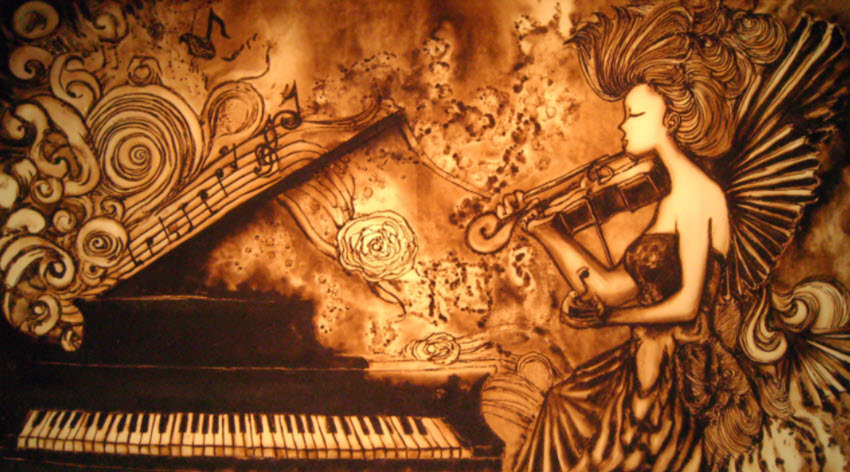
18. Paint-on-Glass Animation
Imagine an oil painting that moves. In this painstaking technique, the artist paints a scene on a sheet of glass. They then slightly modify the painting, e.g., move a character's arm, take a picture, modify it again, take another picture, and so on.
The wet paint allows for fluid transitions and a rich, painterly texture. Aleksandr Petrov's Oscar-winning The Old Man and the Sea is a breathtaking example.
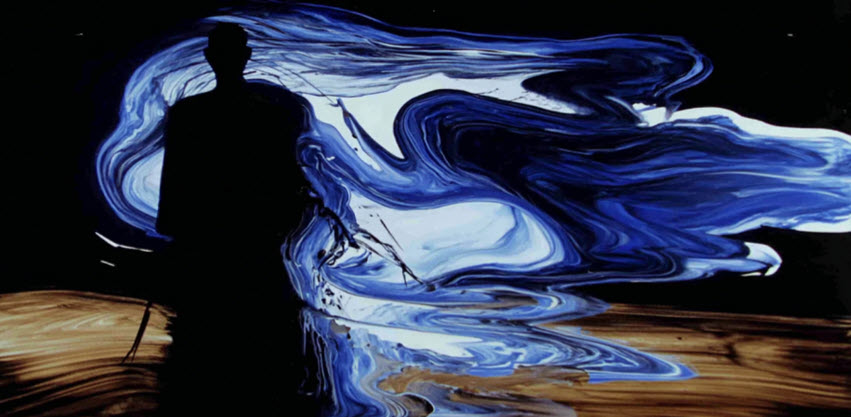
19. Drawn-on-Film Animation
Forget cameras, let's work directly on the film strip! Artists using this technique scratch, etch, paint, or draw directly onto blank or black film stock. When projected, these markings come alive as abstract patterns, dancing shapes, or raw, energetic lines.
Pioneers like Len Lye and Norman McLaren created incredible work this way. It's very direct, often abstract, and highly experimental.

20. Flipbook Animation
The simplest form of animation? Maybe! Draw a series of images on the pages of a small book, each slightly different from the last. Flip the pages quickly, and voilà – motion! It's basic, charming, and something many of us tried as kids.
While simple, it captures the core magic of animation and is still sometimes used for novelty or artistic effect.
21. Puppetry Animation
This often overlaps with stop motion, but specifically involves animating puppets. These could be complex marionettes, hand puppets, or custom-built figures with internal armatures, or skeletons, for posing.
For instance, The Dark Crystal, though that's complex live-action puppetry, or many stop-motion films where the characters are essentially sophisticated puppets moved frame by frame.
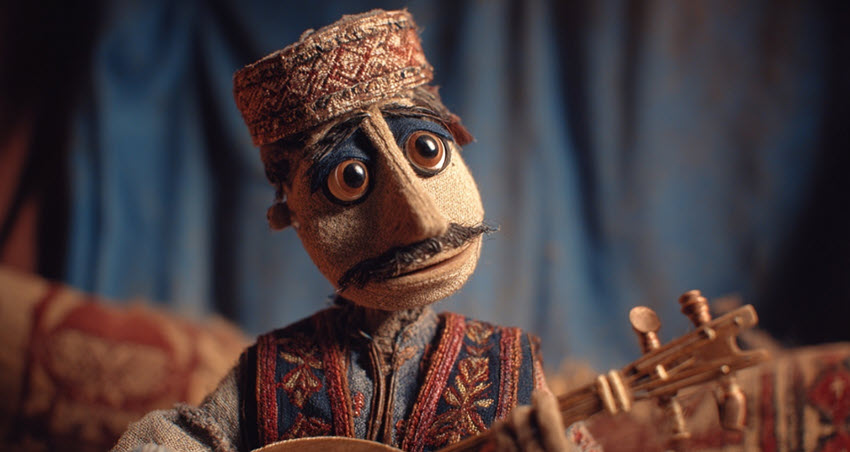
22. Mechanical Animation
Got a complicated gadget or engine and need to explain how it all works? Mechanical animation's your best bet. It’s usually 3D, and it's all about showing you exactly how the parts move and how mechanical stuff actually functions, super accurately.
It's less about character and story, more about technical clarity and demonstrating function. Great for engineering explainers, product demos, or technical training.
23. Screencast Animation
Super practical, especially for tutorials. This involves recording your computer screen (or phone screen) activity, often showing how to use software, a website, or an app.
It's frequently enhanced with voiceover narration, highlights, zooms, and sometimes motion graphics overlays to make it clearer and more engaging than just a raw screen recording.
24. 360° Animation
Step inside the animation! This immersive style creates an animated world that you can look around in, usually via a VR headset or by clicking and dragging on a screen. It places the viewer right in the middle of the action or environment.
Imagine a virtual tour of an animated location or being surrounded by animated characters. It opens up new possibilities for interactive storytelling and experiences.
25. Augmented Reality (AR) Animation
This is like pulling animation right into your living room. AR animation drops digital animated things onto what you're seeing of the real world, usually through your phone or tablet's camera. Some examples I can think of are Pokémon GO or some of those fun social media filters.
26. Pinscreen Animation
This type was dreamed up by Alexandre Alexeïeff and Claire Parker. Picture a screen just packed with hundreds of thousands of tiny pins that can slide in and out.
You'd press objects into these pins or just fiddle with them by hand to make different depths. Shine a light on it from the side, and those depths turn into images, all made of shadow and light.
Animating meant tweaking those pins, one painstaking frame after another. It creates this incredible, textured, almost etched look, like in Alexeïeff's chilling take on The Nose or their work on Night on Bald Mountain.
27. Experimental Animation
Breaking all the rules! Experimental animation isn't defined by one technique but by its approach: pushing boundaries, exploring unconventional methods, focusing on abstract visuals or non-linear narratives. It might involve unusual materials, combining different styles in strange ways, or focusing purely on rhythm and form.
The goal is often artistic exploration rather than straightforward storytelling.
Final Words
Animation isn't just one thing. It's a massive creative toolbox. The style chosen – whether it's the cozy charm of stop motion, the slickness of motion graphics, the epic scale of 3D, or the classic feel of 2D – shapes how a story feels and connects with you.
Next time you watch something animated, take a second look. What style are they using? Why might they have chosen it? It's a fascinating world once you start noticing the strings behind the puppets, the pixels behind the picture, or the fingerprints left in the clay.